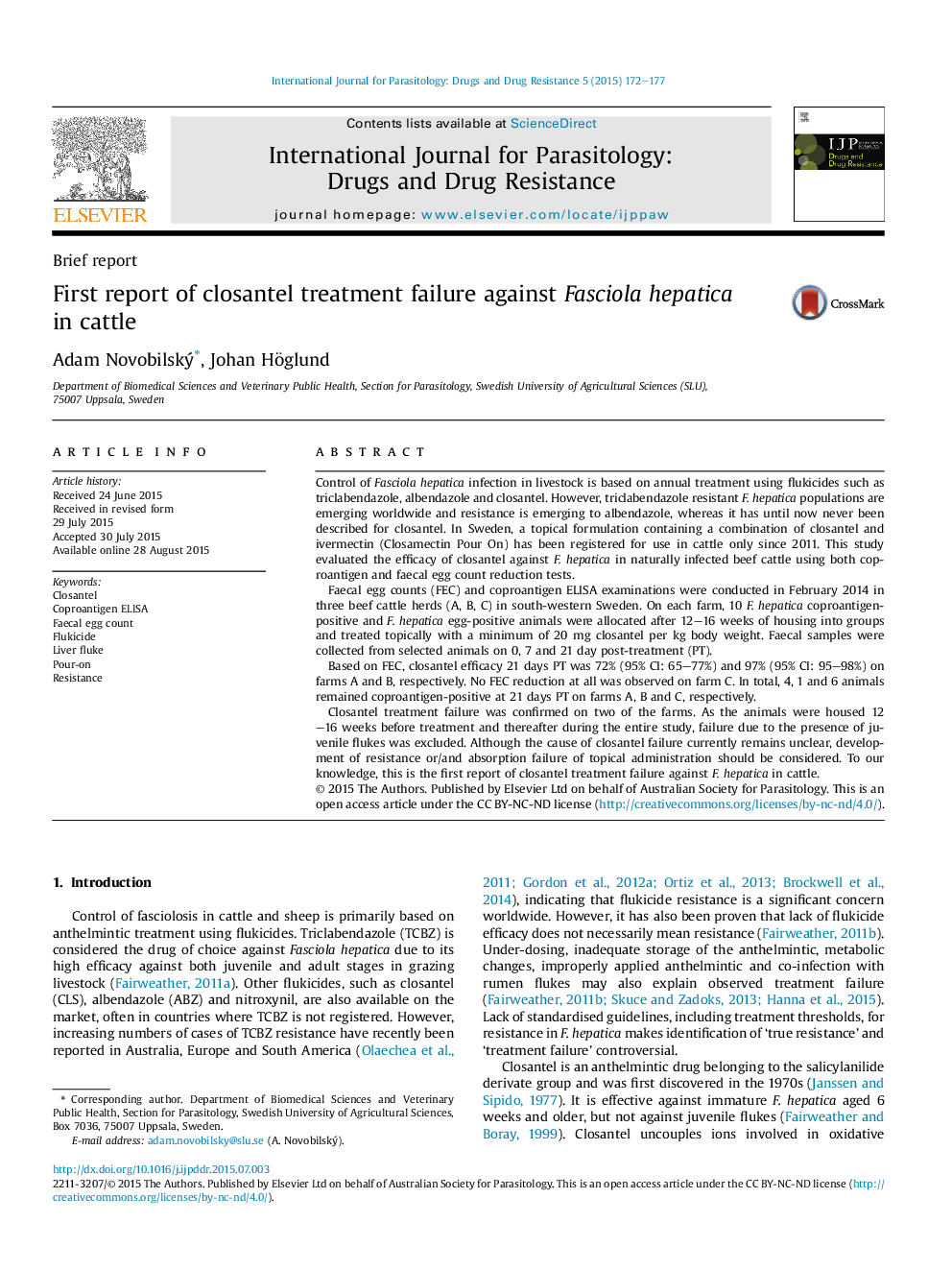| Article ID | Journal | Published Year | Pages | File Type |
|---|---|---|---|---|
| 2054756 | International Journal for Parasitology: Drugs and Drug Resistance | 2015 | 6 Pages |
•Closantel efficacy against Fasciola hepatica was tested in Swedish cattle.•Closantel treatment failure was observed in two of the three beef cattle herds.•Potential causes of closantel failure are discussed.•Standardised guidelines for evaluation of flukicide efficacy are needed.
Control of Fasciola hepatica infection in livestock is based on annual treatment using flukicides such as triclabendazole, albendazole and closantel. However, triclabendazole resistant F. hepatica populations are emerging worldwide and resistance is emerging to albendazole, whereas it has until now never been described for closantel. In Sweden, a topical formulation containing a combination of closantel and ivermectin (Closamectin Pour On) has been registered for use in cattle only since 2011. This study evaluated the efficacy of closantel against F. hepatica in naturally infected beef cattle using both coproantigen and faecal egg count reduction tests.Faecal egg counts (FEC) and coproantigen ELISA examinations were conducted in February 2014 in three beef cattle herds (A, B, C) in south-western Sweden. On each farm, 10 F. hepatica coproantigen-positive and F. hepatica egg-positive animals were allocated after 12–16 weeks of housing into groups and treated topically with a minimum of 20 mg closantel per kg body weight. Faecal samples were collected from selected animals on 0, 7 and 21 day post-treatment (PT).Based on FEC, closantel efficacy 21 days PT was 72% (95% CI: 65–77%) and 97% (95% CI: 95–98%) on farms A and B, respectively. No FEC reduction at all was observed on farm C. In total, 4, 1 and 6 animals remained coproantigen-positive at 21 days PT on farms A, B and C, respectively.Closantel treatment failure was confirmed on two of the farms. As the animals were housed 12–16 weeks before treatment and thereafter during the entire study, failure due to the presence of juvenile flukes was excluded. Although the cause of closantel failure currently remains unclear, development of resistance or/and absorption failure of topical administration should be considered. To our knowledge, this is the first report of closantel treatment failure against F. hepatica in cattle.
Graphical abstractFigure optionsDownload full-size imageDownload as PowerPoint slide
